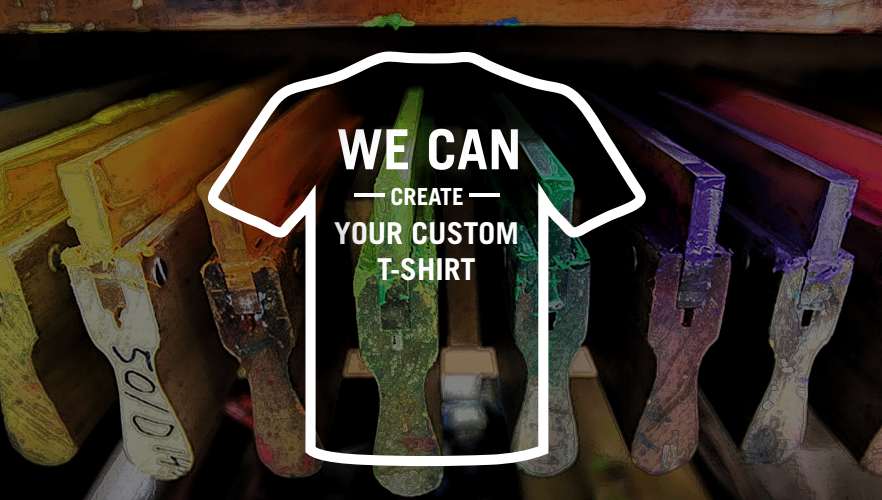Display Printing Uncovered: Whatever You Need to Understand About T-Shirt and Garment Printing Strategies
Display printing is a remarkable method that combines art with technique, offering countless opportunities for creativity. Prepared to discover the crucial aspects that make display publishing an art kind?
The Fundamentals of Display Printing: Exactly How It Functions
When you dive into display printing, you'll discover it's both a science and an art. At its core, display printing entails producing a stencil, or display, that allows ink to pass with just in details areas (screen printing kit). You start by choosing your style and preparing your screen with a light-sensitive emulsion. Once you reveal this emulsion to light, it solidifies, leaving your style as a negative area.
Next, you'll blend your inks and prepare your printing surface area. Position the screen over the textile, after that use a squeegee to press ink via the display onto the garment. This process needs precision, as you want clear, vibrant prints. After printing, you'll cure the ink with warm, ensuring it sticks to the fabric and lasts with washes. Each step is vital, and understanding them will boost your display printing abilities, transforming straightforward garments into special, meaningful pieces.
Types of Display Printing Methods
When you comprehend the fundamentals of display printing, it's time to check out the different methods that can elevate your designs. One popular technique is conventional screen printing, where ink is pressed through a stenciled display.
An additional choice is plastisol printing, known for its durability and vibrant shades, making it a preferred for several brand names. Experiment with halftone printing to create slope impacts and complex layouts.
Necessary Tools for Screen Printing
To attain stunning cause screen printing, having the ideal tools is fundamental. You'll require a durable screen printing framework, which holds the mesh that transfers your design onto the garment. Next off, buy high-quality squeegees; these are vital for applying ink uniformly across the display. You'll likewise call for a great exposure unit to develop your displays, as well as a washout booth for cleansing them after use. A trusted heat resource, like a conveyor dryer or warmth press, is vital for healing your prints to guarantee longevity. Don't fail to remember a correct workspace, equipped with tables and storage for your products. Ultimately, safety equipment, such as masks and gloves, will certainly keep you risk-free from chemicals and inks. With the right tools, you'll be well on your method to generating professional-quality prints.
Choosing the Right Inks and Materials
When selecting inks and materials for screen printing, you require to think about the kind of ink that functions ideal for your job. Consider material compatibility to guarantee your styles look excellent and last lengthy. Discover environmentally friendly ink alternatives to make your printing procedure more lasting.
Kinds Of Screen Inks
Picking the appropriate screen ink is vital for attaining lively, sturdy prints that meet your job's demands. There are several sorts of screen inks to check out. Plastisol ink is prominent for its versatility and simplicity of use, offering superb color opacity on dark textiles. Water-based ink, on the various other hand, offers a softer feeling and is eco-friendly, making it perfect for those wanting to minimize their ecological impact. Discharge inks eliminate color from the textile, resulting in a soft, vintage look however need particular handling. Specialized inks, such as metallic or glow-in-the-dark, can add unique results to your layouts. Assess your project requirements and select the ink that lines up ideal with your preferred outcome.

Material Compatibility Considerations
Comprehending material compatibility is essential for attaining high-grade display prints, especially since various products respond distinctly to different inks. Constantly test your inks on sample fabric to ensure they stick properly and maintain shade honesty. In addition, keep in mind that fabric weight and appearance can impact the final result, so picking the best ink and material combo is vital for your task's success.
Eco-Friendly Ink Options
Environment-friendly inks are ending up being a prominent choice for display printers who want to reduce their environmental influence while preserving quality. When selecting inks, consider water-based inks, which are much less unsafe and easier to cleanse up contrasted to standard solvents.
In addition, try to find inks made from renewable sources, such as soy or vegetable-based alternatives. By selecting the right inks and materials, you'll not just create stunning designs yet additionally add to a more sustainable printing process. Make the button, and your prints will reflect your commitment to the atmosphere!
Preparing Your Style for Screen Printing

Submit Format Demands
To guarantee your layout looks vivid and sharp on textile, you'll require to pay close attention to file style demands for display printing. Make certain your design has a transparent history to stop undesirable white edges on your prints. Maintain shade settings in mind; CMYK is typical for display printing, so transform your RGB designs as necessary.
Shade Splitting Up Methods
Color splitting up is a vital action in preparing your layout for screen printing, and mastering it can greatly boost your print quality. You'll need to damage your style right into individual colors, as each shade needs a different display during printing. This accuracy not just assures accurate color depiction however likewise simplifies the printing procedure.
Resolution and Dimension
Accomplishing the best results in display printing starts with ensuring your design has the appropriate resolution and size. Preferably, your artwork should be at the very least 300 DPI (dots per inch) for sharp, clear prints. If you use reduced resolution, your last product may look pixelated and less than professional.
When it concerns dimension, think about the dimensions of your print location. Style your artwork to match the final print dimension, preferably creating it in the real measurements you'll be publishing. By doing this, you'll avoid any unforeseen scaling issues.
Constantly check your style in both vector and raster styles. Vector graphics can be scaled without losing high quality, making them excellent for screen printing. Preparing correctly will ensure your design looks outstanding on every garment!
Step-by-Step Screen Printing Refine
Display printing is a vibrant process that allows you to create vibrant layouts on various surface areas. To start, you'll need a screen, solution, and your chosen ink. First, prepare your display by cleaning it thoroughly. Next off, apply the solution equally and let it dry in a dark location. Once completely dry, subject your display to light with your design put on it, which will solidify the solution where the light hits, developing a pattern - screen printing kit.
Pour ink onto the display and use a squeegee to push the ink via the stencil onto the fabric. Lift the screen very carefully and let the print completely dry. You have actually successfully screen published your design.
Tips for Successful Screen Printing Projects
While you're diving into your display printing projects, keep in mind that prep work is essential to success. Begin by gathering all your products-- inks, screens, garments, and squeegees. A tidy office assists stop undesirable mistakes, so neat up before you begin.
Next, confirm your art work is high-resolution and correctly sized for your garment. Test your display for correct exposure and tidy it thoroughly to prevent smudges. When mixing your inks, comply with the producer's standards to attain the right uniformity.
Throughout printing, use also stress with your squeegee for consistent outcomes. Don't hurry; take your time to validate each print satisfies your requirements. After printing, let your garments completely dry entirely before managing or packaging them.
Lastly, more tips here constantly keep a sample find out of your benefit future reference. In this manner, you can analyze your development and enhance your methods gradually. Pleased printing!

Frequently Asked Inquiries
How much time Does It Require To Establish a Screen Printing Job?
Establishing up a display printing work commonly takes about 30 minutes to an hour. You'll prepare the displays, mix inks, and change the press. The moment varies based on complexity and experience, so remain organized!
Can I Print on Different Fabric Keys In Making Use Of the Exact Same Method?
Yes, you can publish on various fabric types using the very same method, but you'll require to readjust your inks and settings. Some materials soak up ink differently, so experimenting guarantees the most effective outcomes for every product.
What Prevail Mistakes to Avoid in Display Printing?
When screen printing, avoid typical mistakes like making use of the wrong ink, overlooking correct direct exposure times, or missing pre-press checks. Constantly evaluate your setup and keep clean displays to guarantee top quality results each time.
Just How Can I Correctly Tidy and Preserve My Screen Printing Tools?
To effectively tidy and keep your display printing equipment, you should routinely clean screens with appropriate solvents, inspect mops for wear, and ensure all tools are saved dry and dust-free. Uniformity stops expensive repair services and improves performance.
Is Screen Printing Eco-friendly Contrasted to Various Other Methods?
Screen printing can be more ecologically friendly than various other methods, specifically if you utilize water-based inks and eco-conscious materials. By choosing lasting materials and practices, you decrease waste and lessen your effect on the planet.
Screen Printing Uncovered: Everything You Required to Know Regarding Tee Shirt and Garment Printing Strategies
At its core, display printing includes developing a pattern, or screen, that allows ink visit this website to pass through just in details locations. Position the display over the fabric, then use a squeegee to push ink through the screen onto the garment. One prominent method is conventional screen printing, where ink is pressed with a stenciled display.When selecting inks and materials for display printing, you require to take right into account the type of ink that works finest for your task.